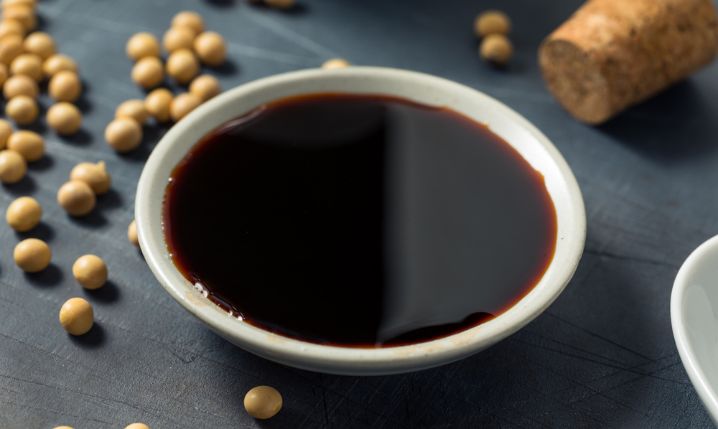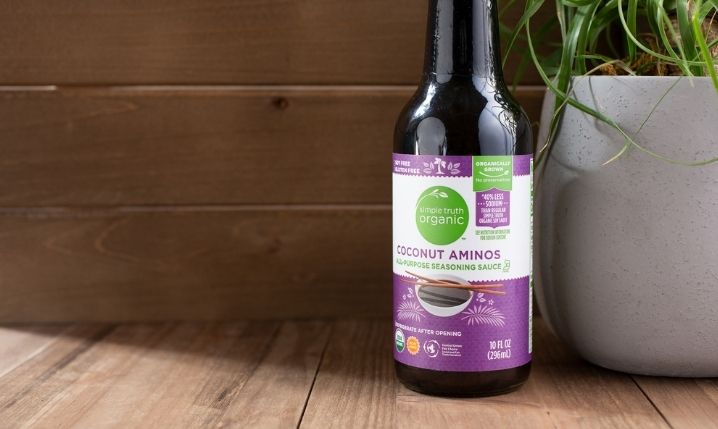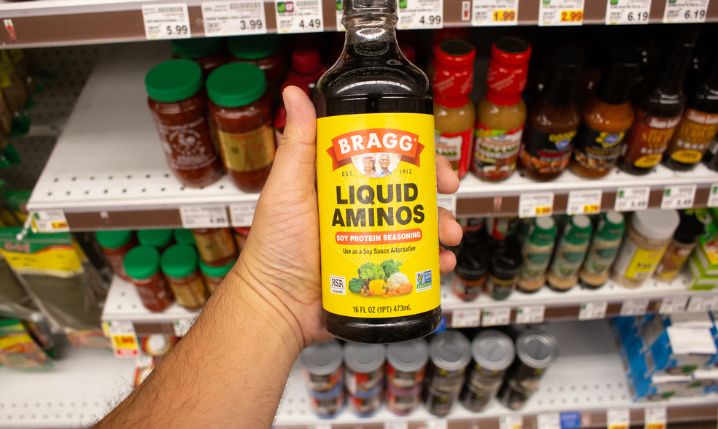Soy Sauce is a Chinese sauce that is used in hundreds of recipes as a dipping sauce, stock, marinade, and condiment. Now popular worldwide, it’s common to find yourself needing a quick & easy replacement. Continue reading to find out the perfect soy sauce substitute for you in any situation.
Contents:
What Is Soy Sauce?

Soy Sauce is a dark to a light brown sauce that originated during the Han dynasty in Ancient China around 2,200 years ago. Today, there are many variations of soy sauce, and they are popular all around the world.
Used in hundreds of recipes as both a condiment and seasoning sauce, soy sauce is made from soybeans, salt, and roasted grains such as wheat. It also contains brine and fermenting agents. This combination of ingredients and the fermenting process gives it a wonderful salty, umami flavor that is famous in Chinese cuisine.
There are two types of traditional Chinese soy sauce: Light and Dark.
Light soy sauce has a thinner consistency and is semi-transparent with a distinctive golden-brown color. It is best used as a seasoning, but you can also use it in stir-fries and noodle dishes.
Dark soy sauce is thicker and has a more viscous quality with a rich dark brown color and is mostly used for adding color and vibrancy to dishes. It’s also saltier than light soy sauce, which is a better low-sodium option.
You can use both dark or light soy sauce in most of the same dishes, but using one or the other can affect the visual appearance of the dish as well as the salt content. They are often interchangeably referred to as ‘regular’ soy sauce or just soy sauce.
Numerous other Asian sauces have been created and are based on traditional soy sauce. In Japan, there’s tamari and shoyu. There is kecap manis, also known as sweet soy sauce, which originated in Indonesia, and many more.
Soy sauce is famous for the umami flavor that enhances dishes, but it contains MSG (Monosodium Glutamate), which for some is an issue due to intolerances. It also contains gluten and soy.
You can use soy sauce in various dishes as it’s highly versatile, not only limited to Asian cuisine. However, it is mostly used for stocks, soups, dips, stir-fries, noodle dishes, rice dishes, and other popular Asian dishes.
Substitutes For Soy Sauce
Check out some of the best options that you’ll find for an authentic, healthier, delicious substitution for soy sauce of any variety.
| Substitute | Taste | Good For |
|---|---|---|
| Tamari | Umami, Mildly Sweet | Sushi, Sashimi, Stir-fries, Noodles, Veggies, Meat |
| Coconut Aminos | Salty, Sweet, Umami | Salty, Sweet, Umami |
| Liquid Aminos | Salty, Sweet, Umami | Salty, Sweet, Umami |
1. Tamari

Tamari is a Japanese soy sauce alternative similar to Chinese soy sauce and Japanese Shoyu sauce. It can be substituted for soy sauce in virtually any dish or recipe as the taste, consistency, and appearance is similar.
It’s also an excellent substitute if you have an allergy to soy sauce ingredients, as it’s gluten-free, and the organic brands don’t contain MSG. It does contain soy, but another option on this list has got you covered if that’s a concern.
Tamari has a rich dark color, and while the flavor is a little more nuanced than the dark soy sauce that it closely resembles, it provides you with the distinctive umami flavor that soy sauce lovers crave.
2. Coconut Aminos

Coconut aminos are another good option that you can use interchangeably with any of the sauces on this list, including light or dark soy sauce.
Liquid aminos aren’t quite as salty as dark soy sauce, but they do make a delicious option as a substitute when you’re looking for a dipping sauce. You can use them for dumplings, sushi, spring rolls, and more. However, they still work in other dishes like fried rice, stir-fries, and so on.
Made from the fermented blossom nectar of coconuts, they don’t actually taste like coconut. Instead, they’re umami, salty, and somewhat sweet. This makes them an excellent sauce for marinades and even fried vegetable dishes.
So many people choose coconut aminos over soy sauce because they’re the perfect substitute for those with allergies and intolerances.
You can use coconut aminos if you’re sensitive to MSG. They also don’t contain any gluten or soybeans.
3. Liquid Aminos

Liquid aminos are another excellent alternative to soy sauce because they’re similar to coconut aminos. However, they contain soy, so we’ve not put them higher on this list for that reason.
If you like the saltiness of both light and dark soy sauce, liquid aminos add enough flavor to satisfy your taste buds. They’re also widely available thanks to most big stores stocking the Bragg liquid aminos product that has made them so famous.
You can add liquid aminos to vegetables, stir-fries, rice dishes, and noodle dishes. They also work well as a dipping sauce or general condiment for traditional Asian dishes like egg rolls, wontons, and similar. They also work wonderfully with delicate meats like chicken and pork.
While they do contain soybeans, liquid aminos are another friendly option if you’re gluten-free, MSG-sensitive, or vegan.
Conclusion
Now you know all there is to know about what makes a good soy sauce substitute and why the options above are ideal in almost any situation you can get back to the kitchen with minimal fuss as soon as possible. Bon appetite!
More about Soy Sauce: